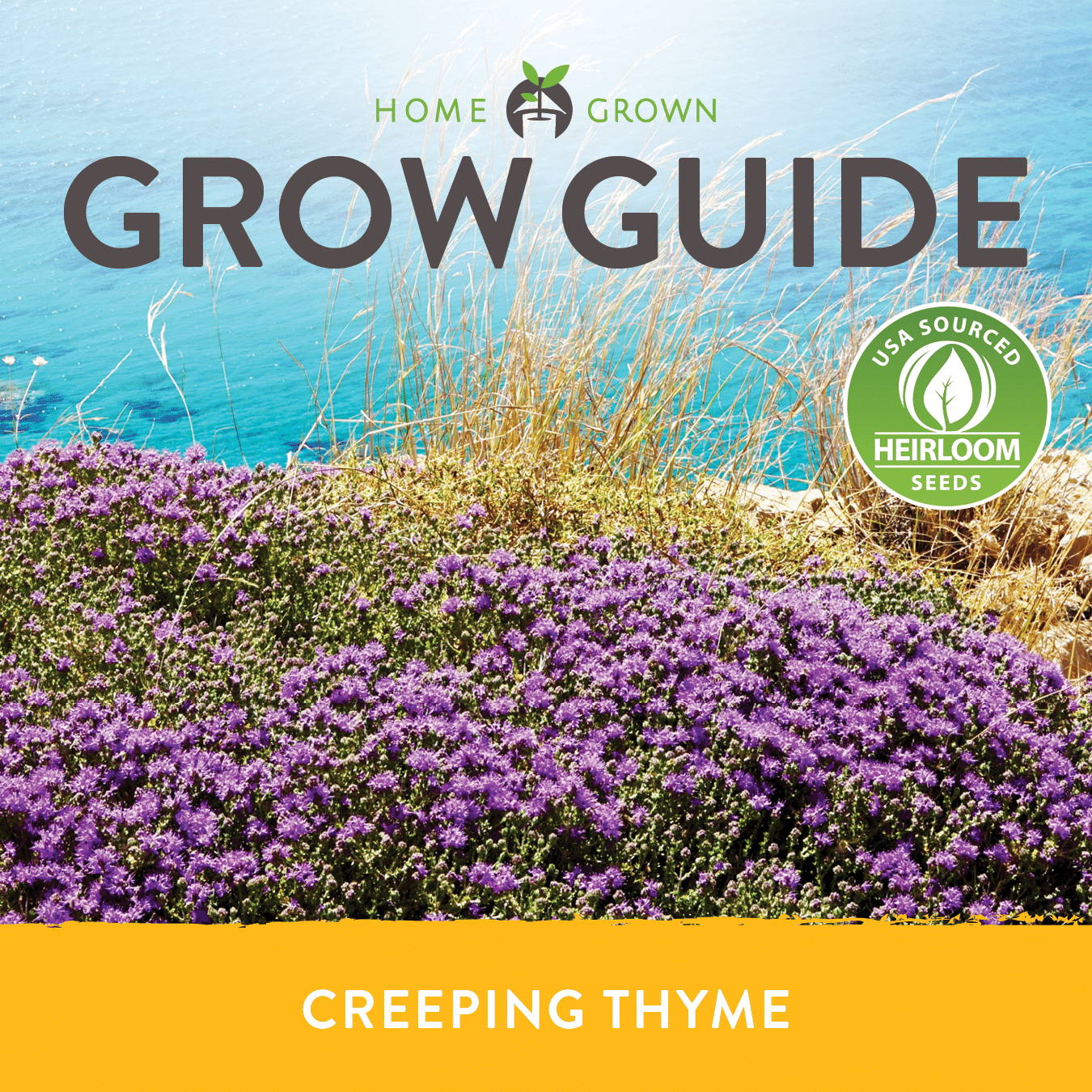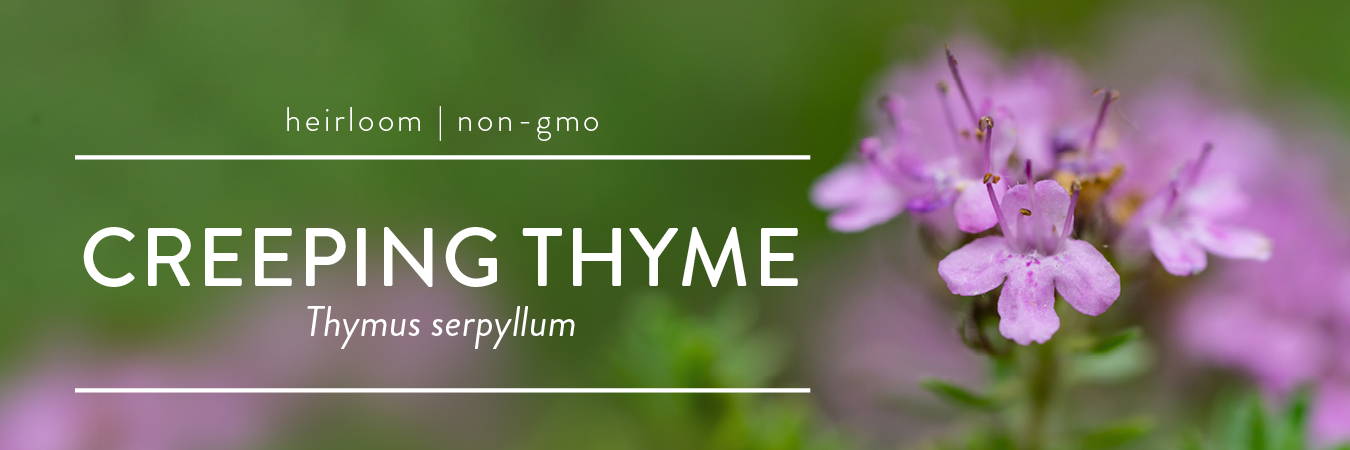
Home Grown is a small family-owned company with a love for gardening. From our own backyard, we have cultivated a passion for gardening that we want to share. We believe that it should be accessible to everyone, fun, and easy to start. Our goal at Home Grown is to provide you with the best quality products and services. Our team has spent years sourcing and creating products that help everyone from beginner to experienced gardeners alike.
We made sure that no green thumb is required to help you have your dream of gardening come true by providing you detailed instructions and guides which are included in all of our seed packs and kits. We hope you experience the same joy we have found for gardening.


Also known as wild thyme, Breckland thyme,
Breckland wild thyme, or elfin thyme,
creeping thyme is a perennial dwarf shrub
and a spreading plant that can tolerate
various growing conditions, including
drought and poor soil. Primarily used as a
ground cover, creeping thyme also makes
a perfect alternative to a grass lawn. It
produces pleasant-scented flowers that can
come in magenta, lavender, or rarely, white.
Thyme blossoms are particularly attractive
to bees, as they provide an abundant extract
of honey. Once established, creeping thyme
is easy to grow and spread but germination
can take a while, so arm yourself with
patience.
Planting indoors is possible but it is more recommended to directly plant outside. If you decide on starting thyme indoors, this should be done 6 to 8 weeks before the last average frost date in your area. Prior to sowing, soak the seeds overnight. Prepare a seed starting tray or pots with well-drained sandy soil. Moist the soil a little before placing the seeds on the soil surface, not deeper than 1/16 inch. Keep in a sunny area in your home with a temperature of about 65°F to 75°F. Germination takes a while and may take longer than 21 days.
When grown to 3 to 4 inches tall, the seedlings are ready to be transplanted from the seed starting tray or pots to your garden. Ensure that all danger of frost has passed, otherwise, freezing temperatures could damage the seedlings. Before transplanting them outside, harden them off by gradually introducing them to outdoor growing conditions. Bring them outside for just a couple of hours per day and then gradually increase their time outside each day until they can spend a whole day outdoors (or eventually night). Pick an area in your garden that receives full sunlight and prepare the soil bed. Take out the weeds and loosen the soil before transplanting the seedlings with a distance of 8 to 12 inches between them. Water only when the ground is dried out.
Creeping thyme thrives with full sunlight and should be planted in an area that is bright and sunny. The best time to direct-sow thyme seeds is after the last spring frost or when the soil has warmed up to at least 65°F. Remove weeds, loosen the soil, and scatter the seeds over the area or sow several seeds every 8 to 12 inches. Keep the top of the soil moist but not soaked. Germination will take a while and sprouts will appear at least 14 days after planting.
The tiny flowers of creeping thyme do not bloom until after the first growing season. These are not usually used as cut flowers but more for adding color to your garden. Similar to most thyme, the leaves from new growth or twigs can
be used in cooking. They can also be dried and used for tea or for flavoring butter, meat dishes, soups, or adding a minty addition to salads. Harvest is optimal during early mornings to retain the fragrance and minty flavor.